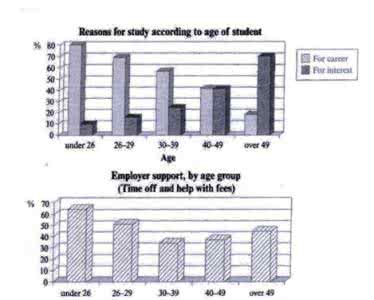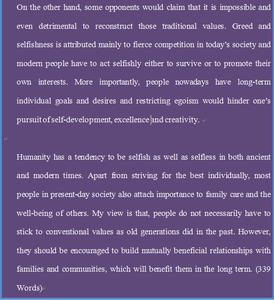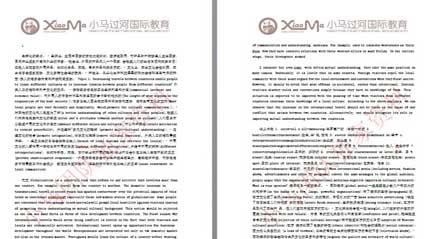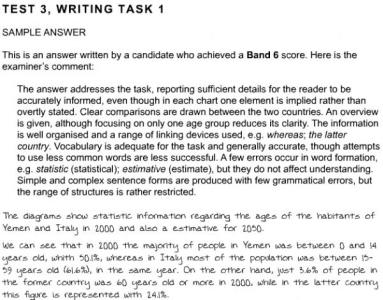The charts below show the main reasons for study among students of different age groups and the amount of support they received from employers.
Summarize the information by selecting and reporting the main features, and make comparisons where relevant.

这两个图分别对比了不同年龄段的学生参加学习的原因以及他们从雇主那里所得到的支持。
The two charts respectively indicate why students of different age groups decide to study and how much support they have received from their employers.
第一个图反映出:随着年龄的增长,出于职业发展原因而学习的学生比例逐渐下降,为兴趣而学习的比重则逐渐加强。第二个图揭示:越年轻或越年老参加学习获得雇主的资助越多。
The first chart reflects that with the increase in age, the percentages of people who study for career prospects decline while those who study out of pure interest prevail. The second chart reveals that the younger or older people are, the more amount of support they get from their employers.
首先,我们看到:26岁至39岁年龄段里,为职业发展而学习的比例最高达到了80%,最低也有55%。然而步入40岁后,为工作而学习的动力减弱,为兴趣而学习开始加强。此阶段,我们看到两者比例各为40%。49岁开始,为工作学习的比例急剧下降到不足20%,而为兴趣而学的比例则大幅攀升到了70%。
Firstly, we see that from age 26 to 39, people who study for career considerations reach a percentage as high as 80% and a lower one is also as high as 50%. When they step into their 40s, people’s self-motivation to study for career declines, but the percentage of those who study out of interest rises. And in this period, we see that the percentages for both motivations draw even at 40%. Starting from 49 years old, people who study for career fall dramatically to less than 20% while people who study for interest rise sharply to 70%.
 爱华网
爱华网



